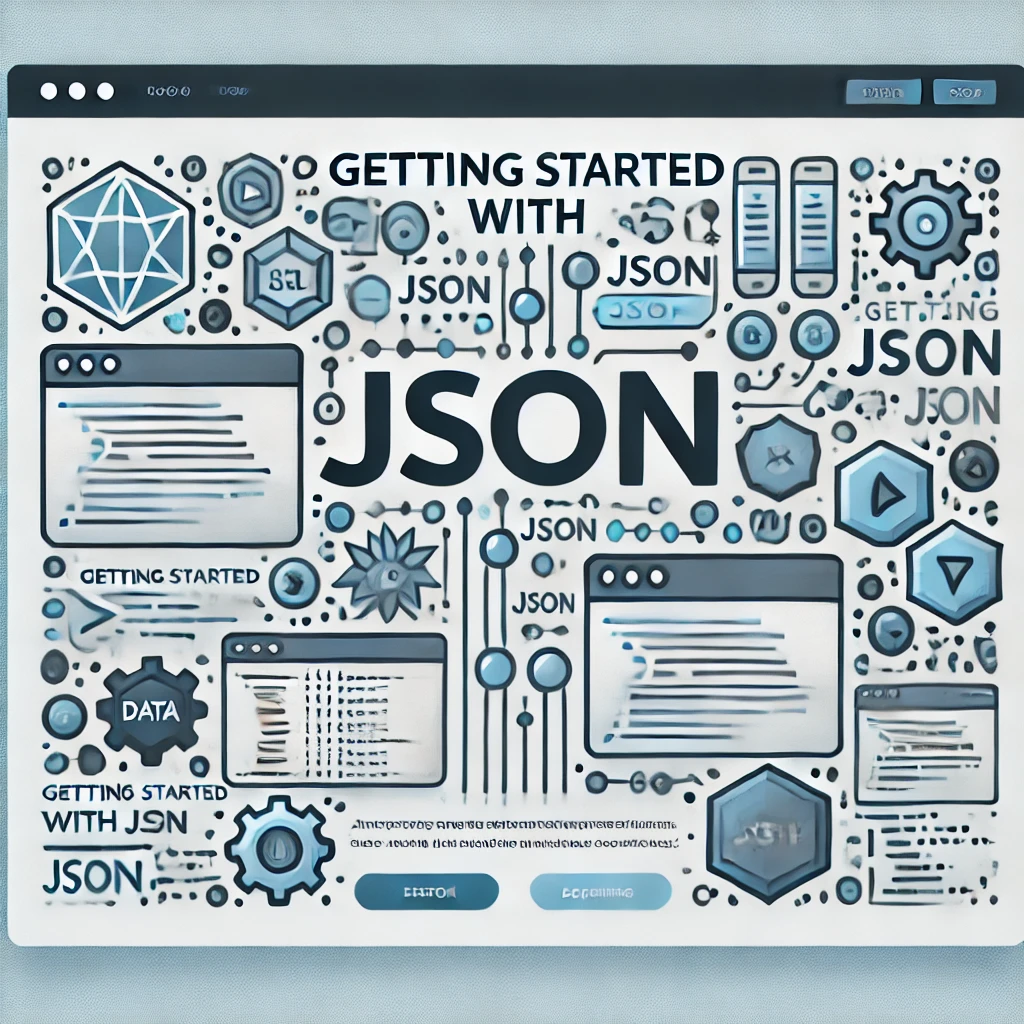Getting Started with JSON – Everything You Need to Know
 Stanley Owarieta
Stanley OwarietaTable of contents
- 1. What is JSON, and Why Is It So Popular?
- 2. How to Write Code in JSON?
- 3. Is JSON a Programming Language?
- 4. Do You Need JavaScript to Use JSON?
- 5. Is JSON the Same as Python?
- 6. JSON vs XML: Which is Better?
- 7. Applications That Use JSON
- 8. Who Created JSON?
- 9. What Languages Use JSON?
- 10. JSON vs HTML: Which is Better?
- 11. Can JSON Be Replaced, and What’s Faster than JSON?
- 12. Running JSON Code
- 13. Should I Learn JSON or XML?

JSON, or JavaScript Object Notation, has become a standard for data exchange in web development, making it a must-know for developers and tech enthusiasts. In this post, we’ll dive into some common questions about JSON to give beginners a thorough understanding of what JSON is, how it works, and where it’s used. Let's start with the basics!
1. What is JSON, and Why Is It So Popular?
JSON stands for JavaScript Object Notation. It’s a lightweight data interchange format that makes it easier for servers and applications to communicate with each other. JSON is easy for humans to read and write and for machines to parse and generate, making it highly popular in APIs and web applications.
Example of JSON:
{
"name": "Alice",
"age": 30,
"city": "New York"
}
2. How to Write Code in JSON?
JSON is simple to write: it consists of key-value pairs, enclosed within curly braces {}. Each key is followed by a colon : and then the value. Remember to use double quotes for both keys and string values. JSON files typically end with an .json extension.
How to create a JSON file?
Open any text editor.
Write JSON syntax similar to the example above.
Save it with a
.jsonextension.
3. Is JSON a Programming Language?
No, JSON isn’t a programming language. JSON uses a format derived from JavaScript object literals, but it’s just a way to store and transfer data. It doesn’t have its syntax for control flow (like loops or conditionals) as a programming language would.
4. Do You Need JavaScript to Use JSON?
Though JSON syntax originated from JavaScript, it can be used with nearly any programming language. For example, Python, Java, C#, and PHP can all parse JSON data. So, you don’t need to know JavaScript to learn or use JSON effectively.
5. Is JSON the Same as Python?
No, JSON and Python are different. JSON is a data format, while Python is a programming language. However, Python can read and write JSON data using built-in libraries, making it a popular choice for JSON-based tasks.
Can Python Read JSON?
Yes, Python has built-in functions for working with JSON, such as json.loads() and json.dumps().
6. JSON vs XML: Which is Better?
XML was widely used before JSON became popular. JSON is generally considered faster and more lightweight than XML. JSON’s simple syntax makes it easier to read and write, whereas XML can be more verbose. However, XML may still be preferred in cases that require strict data validation.
7. Applications That Use JSON
JSON is used extensively in APIs, web services, and databases. It’s the backbone of popular services like (Twitter) X, Google, and many mobile applications because it provides an efficient way to transfer data over the web.
8. Who Created JSON?
Douglas Crockford, a well-known JavaScript developer, is credited with popularizing JSON in the early 2000s. JSON has since become the default format for many web and mobile applications.
9. What Languages Use JSON?
Almost all major programming languages support JSON, including JavaScript, Python, Java, Ruby, PHP, and C#. JSON can even be processed in SQL and NoSQL databases, where it’s stored as structured data.
10. JSON vs HTML: Which is Better?
HTML is a markup language used for creating web pages, while JSON is a format for data storage and transmission. They aren’t comparable since they serve different purposes. HTML structures a page’s content, while JSON stores or transports data between server and client.
11. Can JSON Be Replaced, and What’s Faster than JSON?
New formats like Protocol Buffers (protobuf) and MessagePack offer faster, more compressed data exchange than JSON. While JSON is universally readable, these newer formats are binary and often require specialized tools to read. For most web applications, JSON remains the preferred choice due to its simplicity.
12. Running JSON Code
JSON isn’t a programming language, so you don’t “run” JSON code. Instead, JSON data is parsed or processed by applications. If you want to test JSON data, you can use tools like JSONLint to validate your JSON structure.
13. Should I Learn JSON or XML?
Learning JSON is a good choice, especially for web development, since it’s widely used in modern APIs and applications. XML can be useful in legacy systems or when working with certain enterprise applications, but JSON’s simplicity and popularity make it a more accessible choice for most developers.
Conclusion
JSON is a powerful and widely adopted format for data exchange. Its simple syntax and compatibility with many programming languages make it essential for web developers and backend engineers alike. By understanding JSON’s fundamentals, you'll be better equipped to work with APIs, store data, and build applications that can communicate across different systems.
Subscribe to my newsletter
Read articles from Stanley Owarieta directly inside your inbox. Subscribe to the newsletter, and don't miss out.
Written by

Stanley Owarieta
Stanley Owarieta
I help tech businesses and startups create engaging, SEO-driven content that attracts readers and converts them into customers. From in-depth blog posts to product reviews, I ensure every content is well-researched, easy to understand, and impactful. As a programming learner with HTML, CSS, and JavaScript knowledge, I bring a unique technical perspective to my writing. If you're looking for content that ranks and resonates, let's connect! 📩 Open to collaborations! Message me or email me at freelance@stanleyowarieta.com